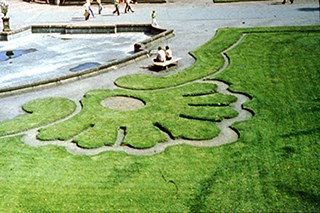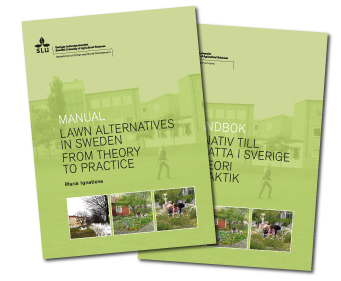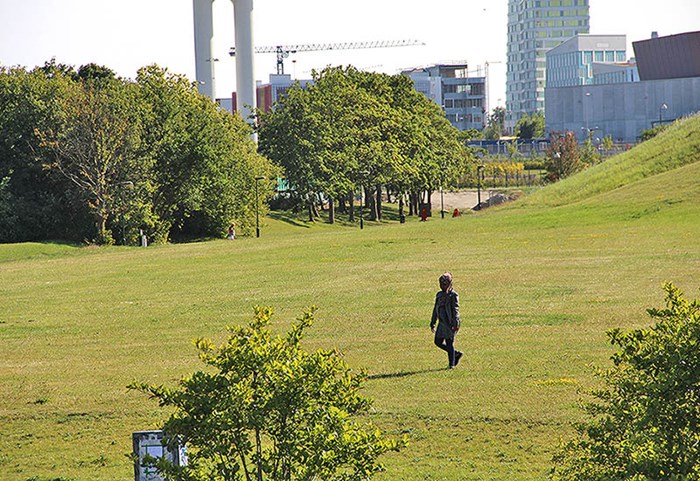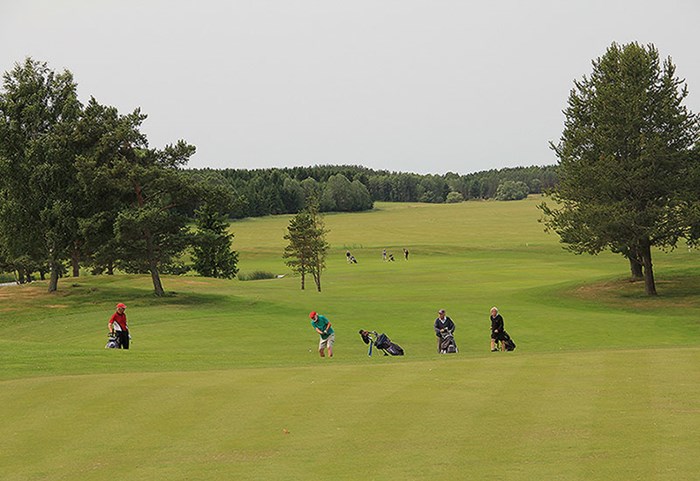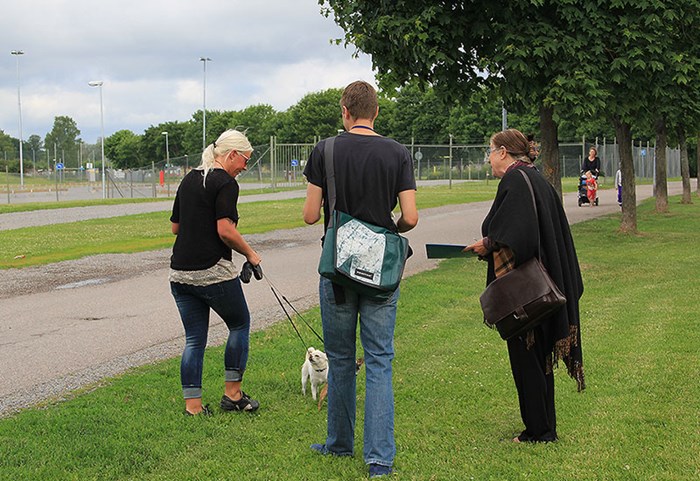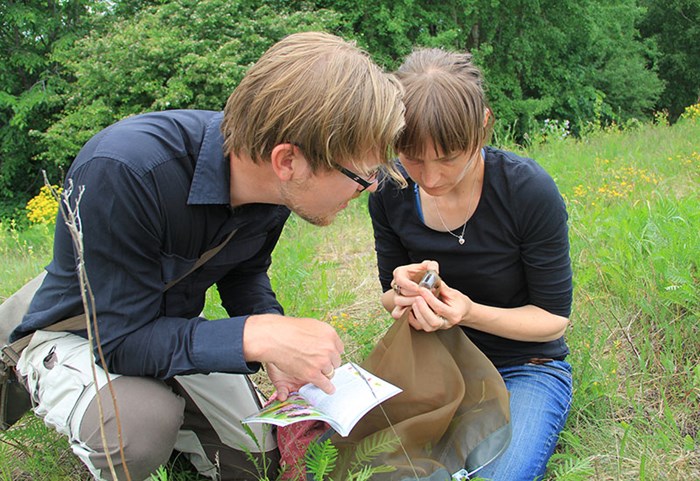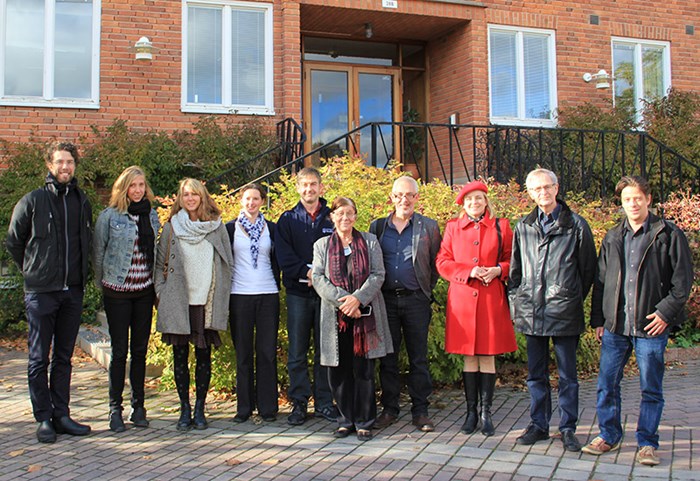BACKGROUND | HISTORY OF LAWNS | PUBLICATIONS | RESEARCH QUESTIONS
NEWS
Science Magazine, 12 October 2018
Ignatieva, M. & Hedblom, M. An alternative urban green carpet, Science Vol. 362, Issue 6411, pp. 148-149.
Science Podcasts, 11 October 2018
Bebyggelsehistorisk Tidskrift
The LAWN project report is out now
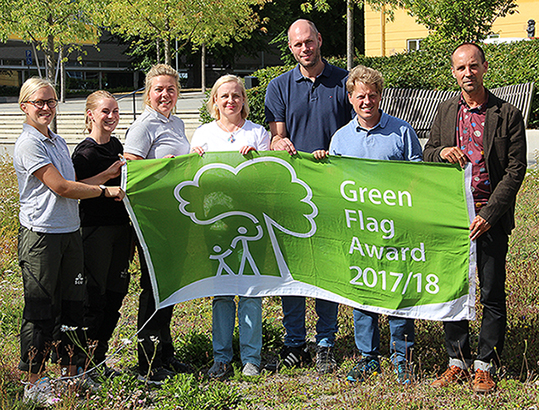
Green Flag Award
Ultuna Campus was given the 2017 Green Flag Award for the three experimental sites with alternative biodiverse types of lawns (grass-free/tapestry lawn, Swedish Meadow/Löväng and Meadow-turf with turf picnic bench), that were part of the project ”Towards sustainable lawns: searching for alternative cost effective and climate friendly lawns in Ultuna Campus”, led by Maria Ignatieva and funded by SLU Climate Fund.
Read more about the Green Flag award »
TV 1 Uppsala: http://www.svt.se/nyheter/lokalt/uppsala/de-planterar-alternativ-grasmatta
Radio: https://sverigesradio.se/sida/avsnitt/721690?programid=1667
Alternative Lawns in Ultuna Campus Folder
A flowering campus: http://resurs.slu.se/ett-blommande-campus/
Background
The project was funded by the Swedish Research Council FORMAS and ran from 2013 until 2016. The project was led by the Swedish University of Agricultural Sciences (in Uppsala).
» See documentation from the Demonstration trail at Ultuna April-Sept 2014
» On Sustainable lawns, related to the Demonstration trail 2014
» Folder on the Campus Lawn project - in Swedish
Background
Today, lawns cover a significant part of all green open spaces in cities (up to 70%) in, e.g., the front- and backyards of private gardens, public parks, cemeteries, and in addition golf courses and along roads. Most people of the Western world view lawns as natural elements of the urban landscape, without questioning their functional, ecological or aesthetic value. There were very few studies of the biodiversity, environmental impact, public opinion about and the historical and contemporary motives for planning and management of different types of lawns.
This project was an interdisciplinary collaboration, including stakeholders, to study lawns from different perspectives as social and ecological phenomenon in order to understand their roles in sustainable urban planning, design and management. Ecological knowledge, values and norms influence the management of urban green areas and may thus influence the environmental impact of, biodiversity in and ecosystem services provided by lawns. Potential alternative solutions are impossible to find without an understanding of the social motives behind the strong attachment of the modern Western society to lawns. The interdisciplinary approach allowed us to exchange knowledge between disciplines and to achieve a multi-dimensional understanding of the lawn as a phenomenon.
Research questions
Specific aims:
- To examine the motives for decisions about establishment and management of lawns among different stakeholders
- To research historical roots, perceptions, norms, aesthetical and design values of current management practices of lawns
- To examine general coverage of lawns in Swedish cities
- To analyse environmental impact (carbon balance) and biodiversity (plants, pollinators and earth worms) of lawns. Read more
- To understand how to establish and manage lawns in Sweden to promote their provision of ecosystem services in cities.
Long term objectives:
- To deliver results in the form of an urban greening manual, demonstration sites, and different management packages for municipalities and communities with recommendations on how to establish and manage sustainable lawns
- To be a model for future interdisciplinary studies of lawns in Europe.
History of lawns
The lawn prototypes are probably the European floodplain meadow vegetation and secondary meadows after clearing and grazing. In Medieval time it was mostly cut turf with a lot of flowers and grass from meadows which was transported to castle gardens. Lawns as decorative entity with domination of European meadow grasses were used in the formal parterres of French gardens.
It was an essential element of English landscape parks of the 18th century and the Victorian Gardenesque parks from the 19th century, where lawn was used for recreational purposes and became a symbol of social status.
During the 20th century the maintenance of lawns created a commercial multibillion industry with production of seeds, pesticides, fertilizers, lawnmowers and irrigation technology and today, e.g., North Americans spend an estimated $100 billion on lawns annually.
Our publications
Tidåker P., Wesström, T. & Kätterer, T. (2017). Energy use and greenhouse gas emissions from turf management of two Swedish golf courses. Urban Forestry and Urban Greening, 21: 80-87.
Ignatieva, M., Eriksson, F., Eriksson, T., Berg P. & Hedblom, M. (2017) Lawn as a social and cultural phenomenon in Sweden. Urban Forestry & Urban Greening, 21: 213-223.
Hedblom, M., Lindberg, F., Vogel, E., Wissman, J. & Ahrné, K. (2017) Estimating urban lawn cover in space and time: Case studies in three Swedish cities. Urban Ecosystems, pp. 1-11.
VegTech: http://www.gronarestader.se/blogg/blogpost/idag-levererar-veg-tech-7500-ortpluggplantor-till-campus-ultuna/
Poeplau C., Marstorp H., Thored K., Kätterer T. 2016. Effect of grassland cutting frequency on soil carbon storage - A case study on public lawns in three Swedish cities. Soil discussion http://www.soil-discuss.net/soil-2015-78/
Eriksson, F., Eriksson, T. & Ignatieva, M., 2015, Golf courses as part of urban green infrastructure: social aspects of golf courses and extensively managed turfgrass areas from Nordic perspective, Proceedings from 52nd IFLA Congress, June 6-7 2015, St. Petersburg Russia.
Ignatieva, M., 2015, Alternativa grönytor - hur man designar för biologisk mångfald i staden, Biodiverse Nr 2 2015, s. 20.
Ignatieva, M., Ahrné, K., Wissman, J., Eriksson, T., Tidåker, P., Hedblom, M., Kätterer, T., Marstorp, H., Berg, P., Ericsson, T., Bengtsson, J., 2015, Lawn as a cultural and ecological phenomenon: A conceptual framework for transdiscipilinary research, Urban Forestry & Urban Greening 14 (2015), pp. 383-387.
Wissman, J., Norlin, K. & Kall, Ann-Sofie, Klippa Gräsmattan - självvald skötselmetod? Biodiverse Nr 1 2015.
Publication in professional journal “Urban Magazine” in Russian and English, January 2014
